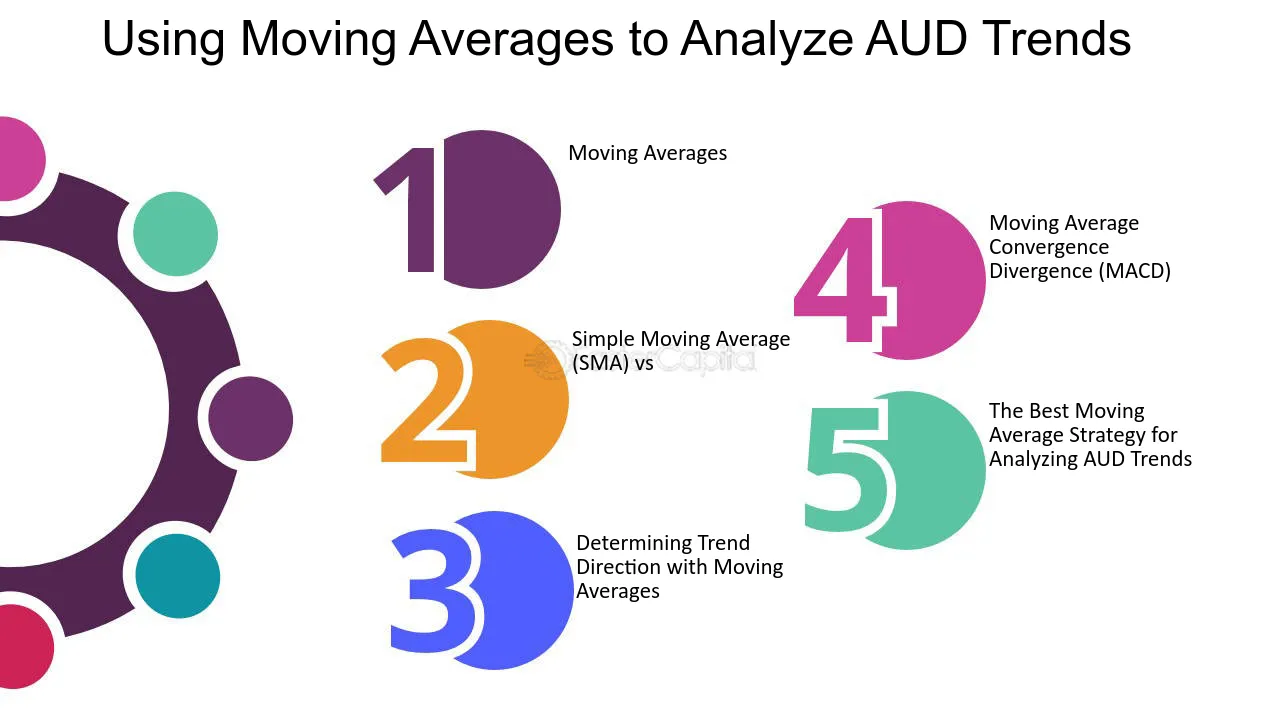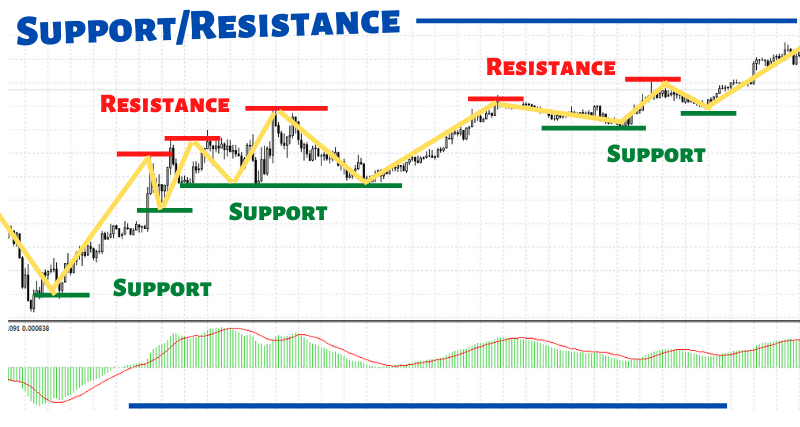Did you know that over 5 trillion dollars are traded in the Forex market every day? That’s more than the GDP of the entire world! In this article, we dive deep into the essentials of analyzing Forex market trends for day trading. You’ll discover key indicators and tools to track short-term trends, the impact of economic news, and how to utilize technical analysis with charts. We’ll explore the significance of moving averages, common pitfalls, and the influence of geopolitical events. Additionally, learn the importance of sentiment analysis, support and resistance levels, and effective timing strategies. Finally, we’ll discuss the best practices for blending fundamental and technical analysis, and how to stay updated on real-time trends. Join us at DayTradingBusiness to enhance your trading strategies and navigate the Forex market with confidence!
What are the key indicators for analyzing Forex market trends?
Key indicators for analyzing Forex market trends in day trading include:
1. Moving Averages: Identify trend direction and potential reversal points.
2. Relative Strength Index (RSI): Measure overbought or oversold conditions.
3. MACD (Moving Average Convergence Divergence): Spot momentum shifts and trend changes.
4. Bollinger Bands: Assess volatility and potential price breakouts.
5. Fibonacci Retracement Levels: Determine potential support and resistance levels.
6. Volume: Gauge the strength of a price move.
Use these indicators to make informed trading decisions based on market behavior.
How can I identify short-term Forex market trends for day trading?
To identify short-term Forex market trends for day trading, follow these steps:
1. Use Technical Indicators: Apply moving averages (like the 20 or 50 EMA) to spot trend direction. Look for crossovers as potential entry points.
2. Check Price Action: Analyze candlestick patterns for signals. Look for formations like dojis or engulfing candles to confirm reversals or continuations.
3. Monitor Support and Resistance Levels: Identify key price levels where the market has reversed previously. These can indicate potential breakout or bounce points.
4. Follow Economic News: Keep an eye on economic calendars for announcements that can impact currency prices. High-impact news can create volatility and trend shifts.
5. Analyze Time Frames: Use shorter time frames (like 5 or 15 minutes) for day trading. Compare trends across different time frames to confirm direction.
6. Observe Volume: Look for increased trading volume alongside price movement to validate trends. Higher volume can indicate stronger market conviction.
By combining these methods, you can effectively spot short-term trends conducive to day trading in the Forex market.
What tools are best for tracking Forex market trends?
The best tools for tracking Forex market trends include:
1. MetaTrader 4/5: Offers advanced charting, technical indicators, and automated trading options.
2. TradingView: Provides real-time data, customizable charts, and a strong community for sharing insights.
3. Forex Factory: Features economic calendars, news updates, and a forum for trader discussions.
4. Investing.com: Offers comprehensive market analysis, live quotes, and news tailored to Forex.
5. Bloomberg Terminal: Delivers in-depth financial data, analytics, and news for professional traders.
Using these tools can enhance your ability to analyze Forex market trends effectively for day trading.
How do economic news releases impact Forex market trends?
Economic news releases significantly impact Forex market trends by influencing currency values and trader sentiment. Positive news, like strong employment data, can boost a currency's value, while negative news, such as poor GDP growth, may lead to depreciation. Traders react quickly to these releases, causing volatility and creating trading opportunities. For day trading, understanding the timing and implications of these announcements is crucial for making informed decisions.
What role do technical analysis and charts play in Forex trend analysis?
Technical analysis and charts are essential in Forex trend analysis for day trading. They help traders identify price patterns, trends, and support and resistance levels. By using indicators like moving averages, RSI, and MACD, traders can gauge momentum and potential reversals. Charts visualize historical price data, allowing for quick assessments of market behavior. Overall, they provide the tools needed for informed decision-making and risk management in fast-paced Forex markets.
How can I use moving averages to analyze Forex trends?

To analyze Forex trends using moving averages, first select the type of moving average: simple (SMA) or exponential (EMA).
1. Identify Timeframes: Choose timeframes that match your trading style. For day trading, consider short-term averages like the 5, 10, or 20-period moving averages.
2. Plot Moving Averages: Add these moving averages to your price chart. The crossover of shorter averages over longer ones can signal potential buy opportunities, while the opposite indicates sell signals.
3. Confirm Trends: Use moving averages to confirm the trend direction. If the price is above the moving average, it indicates an uptrend; if below, a downtrend.
4. Support and Resistance: Moving averages can act as dynamic support and resistance levels. Price often reacts around these averages.
5. Combine with Other Indicators: For better accuracy, use moving averages alongside other indicators like RSI or MACD to confirm signals.
By following these steps, you can effectively use moving averages to analyze Forex trends for day trading.
What patterns should I look for in Forex market trend analysis?
Look for these key patterns in Forex market trend analysis for day trading:
1. Higher Highs and Higher Lows: Indicates an uptrend; buy signals.
2. Lower Highs and Lower Lows: Signals a downtrend; sell signals.
3. Support and Resistance Levels: Identify where prices bounce or reverse.
4. Moving Averages: Crossovers can indicate trend changes; a short-term average crossing above a long-term average is bullish.
5. Chart Patterns: Look for formations like triangles, flags, and head-and-shoulders for potential reversals or continuations.
6. Volume Trends: Increasing volume with price movement confirms strength; decreasing volume may signal a reversal.
Use these patterns to make informed trading decisions.
How do geopolitical events influence Forex market trends?
Geopolitical events significantly influence Forex market trends by affecting currency values and trader sentiment. For instance, political instability can lead to a depreciation of a nation's currency as investors seek safer assets. Economic sanctions often result in volatility, impacting exchange rates based on perceived risk. Additionally, election outcomes can shift market confidence, prompting traders to buy or sell currencies based on expected policy changes. Monitoring news releases and geopolitical developments is crucial for day traders to make informed decisions and capitalize on market movements.
What are the common mistakes in analyzing Forex market trends?
Common mistakes in analyzing Forex market trends include:
1. Ignoring Economic Indicators: Traders often overlook key economic reports that impact currency values.
2. Overreliance on Technical Analysis: Relying solely on charts without considering market fundamentals can lead to poor decisions.
3. Lack of a Trading Plan: Entering trades without a clear strategy increases the likelihood of losses.
4. Failing to Manage Risk: Not using stop-loss orders or risking too much on a single trade can devastate a trading account.
5. Chasing Trends: Entering a trade too late in a trend often results in missing the best opportunity.
6. Neglecting Market Sentiment: Ignoring market psychology and trader sentiment can misguide analysis.
7. Overtrading: Frequent trading without proper analysis can lead to emotional decision-making and loss of capital.
Avoiding these pitfalls can enhance your Forex trading success.
How can sentiment analysis aid in Forex trend evaluation?
Sentiment analysis can enhance Forex trend evaluation by gauging trader emotions and market sentiment. By analyzing social media, news articles, and trading forums, you can identify bullish or bearish trends. This insight helps predict potential market movements, allowing for timely entry and exit points in day trading. For example, if sentiment shifts to overwhelmingly positive about a currency, it may signal an upcoming rise, guiding your trades accordingly.
What is the significance of support and resistance levels in Forex trading?

Support and resistance levels in Forex trading identify price points where the market tends to reverse direction. Support is where prices stop falling and often bounce back up, while resistance is where prices stop rising and may drop. These levels help traders make informed decisions about entry and exit points, manage risk, and set stop-loss orders. Recognizing these levels can improve trade timing, enhance profitability, and provide insights into market psychology, making them crucial for effective day trading strategies.
How can I effectively time my trades based on Forex market trends?
To effectively time your trades in Forex based on market trends, follow these steps:
1. Identify Trends: Use technical analysis tools like moving averages and trend lines to spot upward or downward trends.
2. Monitor Economic News: Stay updated on economic indicators and news releases that can impact currency values.
3. Use Time Frames: Analyze multiple time frames (e.g., 1-hour, 4-hour, daily) to confirm trends and entry points.
4. Apply Technical Indicators: Utilize indicators like RSI, MACD, or Bollinger Bands to gauge potential reversals or continuations in trends.
5. Set Entry and Exit Points: Determine your entry and exit levels based on support and resistance zones to capitalize on price movements.
6. Practice Risk Management: Use stop-loss orders to protect your capital and adjust position sizes according to your risk tolerance.
By combining these strategies, you can time your Forex trades more effectively according to market trends.
What are the best strategies for day trading based on Forex trends?
1. Trend Analysis: Use technical analysis to identify trends. Look for moving averages and trend lines to spot upward or downward movements.
2. Price Action: Focus on price action patterns like breakouts, reversals, and support/resistance levels. These can indicate potential entry or exit points.
3. Economic News: Stay updated on economic indicators and news that can impact currency values. Major announcements can create volatility ideal for day trading.
4. Risk Management: Set stop-loss and take-profit levels to manage risk. Never risk more than 1-2% of your trading capital on a single trade.
5. Timeframes: Use shorter timeframes (5-minute, 15-minute charts) for quick trades. This helps capture small price movements effectively.
6. Trading Volume: Monitor trading volume to confirm trends. High volume can validate a trend's strength, while low volume may suggest weakness.
7. Indicators: Utilize indicators like RSI or MACD to identify overbought or oversold conditions. These can signal potential reversals or continuations.
8. Demo Trading: Practice with a demo account to refine strategies without financial risk. Test different approaches to find what works best for you.
9. Stay Disciplined: Stick to your strategy and avoid emotional trading. Consistency is key to long-term success in day trading Forex.
Learn about Best Day Trading Strategies for Volatile Markets
How do I combine fundamental and technical analysis for Forex trend analysis?
To combine fundamental and technical analysis for Forex trend analysis, start by identifying key economic indicators that impact currency pairs, such as interest rates, employment data, and GDP growth. Monitor news events and central bank announcements that can cause volatility.
Next, use technical analysis tools like moving averages, trend lines, and RSI to identify entry and exit points. Look for patterns that align with fundamental signals; for instance, if a strong employment report boosts a currency, check technical charts for bullish patterns.
Integrate both approaches by confirming technical signals with fundamental data. For example, if technical analysis shows a potential uptrend, ensure that underlying economic conditions support this trend. This synergy enhances your day trading strategy, allowing for more informed decisions.
What are the implications of currency correlations for Forex trend analysis?
Currency correlations impact Forex trend analysis by indicating how pairs move in relation to one another. Positive correlations suggest that when one currency strengthens, the other likely does too, while negative correlations indicate an inverse relationship. Understanding these correlations helps traders predict market movements, manage risk, and identify potential trading opportunities. For example, if EUR/USD and GBP/USD are positively correlated, a trend in one can signal similar movements in the other. Analyzing these relationships enhances decision-making in day trading strategies, allowing for better timing and entry points.
## How Can I Analyze Forex Market Trends for Effective Day Trading?

To analyze Forex market trends for day trading, focus on key indicators like moving averages, RSI, and MACD. Monitor economic news releases and geopolitical events that impact currency pairs. Utilize price action and candlestick patterns to identify entry and exit points. Regularly review charts for support and resistance levels to make informed trading decisions.
Learn more about: Understanding Forex Day Trading Markets
Learn about How to Analyze Crypto Market Trends for Day Trading
How can I stay updated on Forex market trends in real-time?
To stay updated on Forex market trends in real-time, use reliable trading platforms like MetaTrader, TradingView, or Thinkorswim, which offer live charts and analysis tools. Follow financial news websites, such as Bloomberg or Forex Factory, for breaking news that impacts currency prices. Consider subscribing to Forex signals or analysis services that provide daily updates and insights. Join Forex trading forums or social media groups for community-driven information. Finally, utilize mobile apps that send alerts for significant market movements or economic events.
Learn about How to Stay Updated on Crypto Market News for Day Trading
Conclusion about Analyzing Forex Market Trends for Day Trading
Understanding Forex market trends is essential for successful day trading. By leveraging key indicators, technical analysis, and staying informed on economic news and geopolitical events, traders can make more informed decisions. Utilizing tools like moving averages and sentiment analysis enhances your ability to identify trends and avoid common pitfalls. Remember, effective day trading hinges on a blend of fundamental and technical insights. For comprehensive guidance and resources, DayTradingBusiness is your go-to partner in navigating the complexities of Forex trading.
Learn about Day Trading Stocks: Analyzing Market Trends
Sources:
- Trading the foreign exchange market with technical analysis and ...
- Artificial intelligence techniques in financial trading: A systematic ...
- Utilizing artificial neural networks and genetic algorithms to build an ...
- A network analysis of the structure and dynamics of FX derivatives ...
- A Deep Neural-Network Based Stock Trading System Based on ...
- Liquidity in the global currency market - ScienceDirect